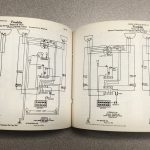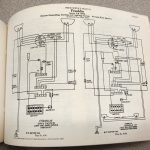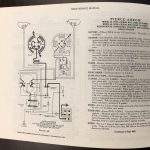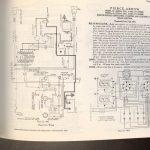Throwing It Back to the Early Days of Automobiles
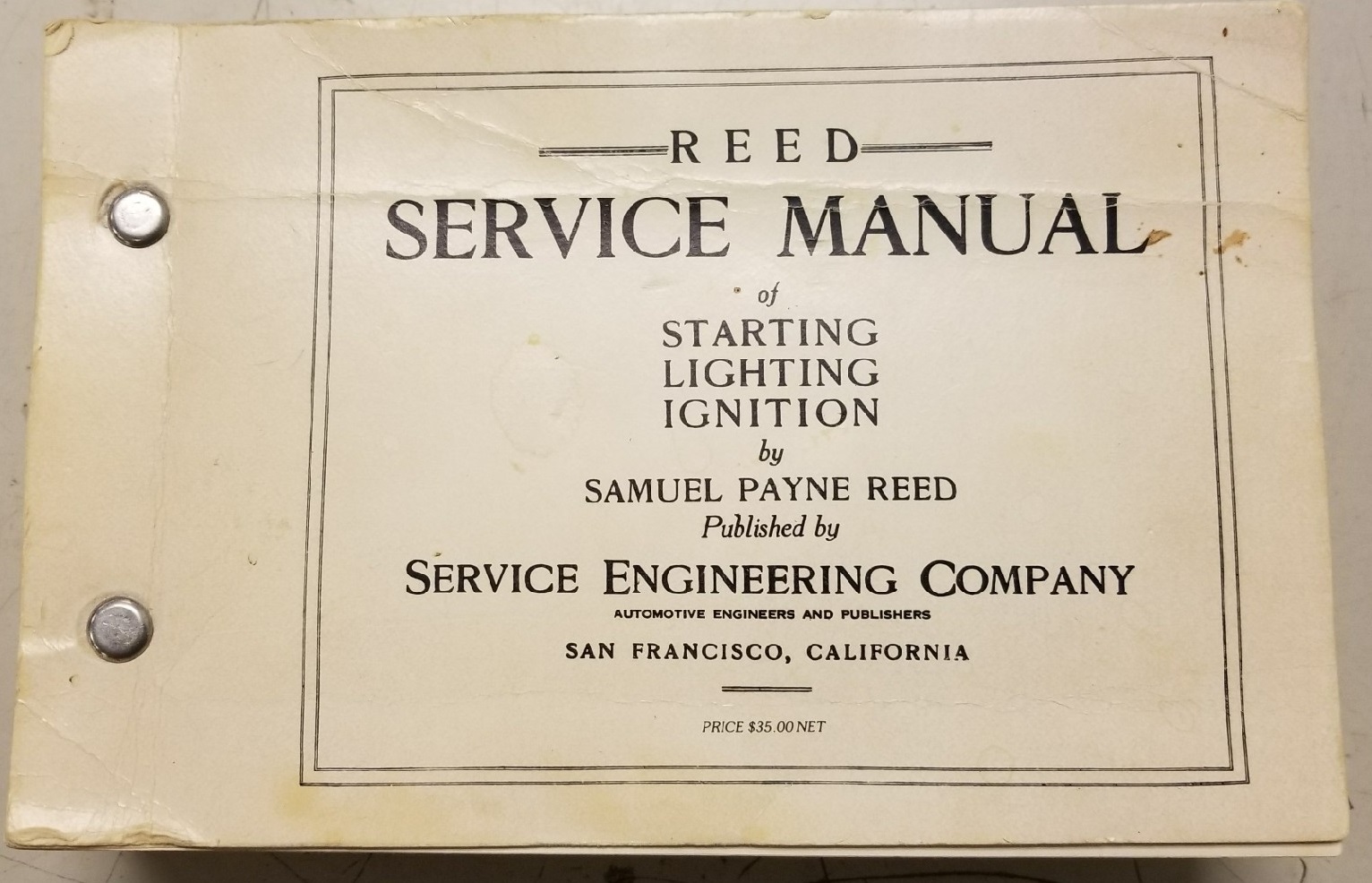
For Starting, Lighting and Ignition information and diagrams, see the photo album at the bottom.
With the excitement of our 100th Anniversary this year, we at Mitchell 1 wanted to delve into our history even further. In doing so, we pulled out our prized jewel, a 1918 Reed Service Manual, our earliest record of what evolved to ProDemand, your current Mitchell 1 auto repair information. After flipping through the worn pages, it was remarkable to see how many vehicle manufacturers were unrecognizable. We’re talking about the kind of vintage that is far from ever being seen on the road and only seen in the most serious collector’s garage.
Do any of these sound familiar: Crow-Elkhart, Adlake, or Roamer? If you said yes, kudos to you! You know your vintage cars. But if you’re like many others, these are mysterious brands that seemed to have disappeared overnight — many during The Great Depression.
This antique treasure inspired us to catch up on some of our vintage car knowledge and learn a bit more about the history of these cars that paved the way for our current automotive technology. Randomly, we selected three auto companies, all of which either had some pretty incredible innovations, impressive founders and industry thinkers or even just quirky stories. Here are some highlights of what we found on the Pierce-Arrow Motor, Franklin and Cunningham Automobile companies.
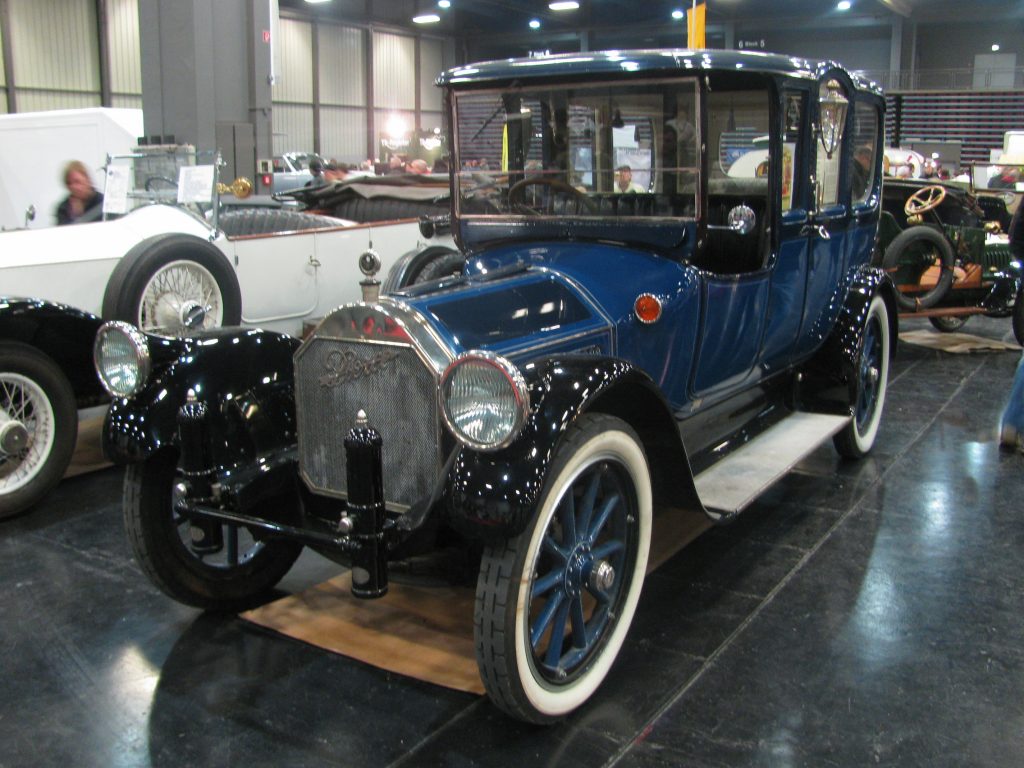
Pierce-Arrow 38-C4 from 1916. 6-cylinder engine. Photo cred: Wikimedia – https://ow.ly/Hnrn30j50zH
Pierce-Arrow Motor Car Company – 1916 Pierce-Arrow Model38
If you’re thinking about collecting or restoring this Model 38, don’t hold your breath. It is believed to be only one of three still remaining. Pierce-Arrow cars were luxury cars known to be owned by car drivers with deep pockets, Hollywood stars and other “elites” during the time. These affluent and demanding customers could custom build their car to order— in fact, they were encouraged to do so by the company.
Founder: George N. Pierce
Lifespan: 1901 – 1938
Headquarters: Buffalo, New York, United States
Fun Fact/s: This car’s first build was actually requested by Mrs. William K. Vanderbilt, the founder of the Vanderbilt Cup Races, and it was the first official car of the White House.
History:
Pierce-Arrow started out in 1865 as Heinz, Pierce and Munschauer, a household products company, but by 1872 Pierce bought out the other two owners and added bikes to his line of products. Shortly after, he started working on making steam-powered cars, where he produced his first single-cylinder car in 1901. It only took a few more years to bump up the power to a 2-cylinder in 1903.
It was about then he shifted his focus to premium models. By 1905, The Great Arrow, Pierce’s most prized product, won the Glidden Tour, marking it as one of the most dependable and durable cars on the market at the time. By 1910, Pierce was already offering 6-cylinder cars and was most known for their headlights which switched to flared lights in the front of the fenders versus at the radiator’s side. The company experienced some really exciting advances in technology and recognition in the community. To see more about Pierce-Arrow’s history, ads and accolades, visit here.

Franklin Modell 9-B Touring 1919. Photo cred: Wikimedia. https://ow.ly/Hnrn30j50zH
Franklin Automobile Company – 1919 Model 9B Touring
Founder: Herbert H. Franklin
Lifespan: 1902 – 1934
Headquarters: Syracuse, New York, United States
Fun Fact/s: Franklin participated in the first automobile show held in 1899! Also, if you are into racing, just know that Franklin was too. In fact, Franklin was a big-timer in the first racing circuits.
History:
The Franklin Auto Company was a perfect pairing of a business genius, Herbert Franklin, and an engineering mastermind, John Wilkinson. Originally, Herbert Franklin fell into an interest and opportunity with die-casting, inspiring him to open up his own business called H.H. Franklin Manufacturing Company. During this time, he was introduced to Wilkinson and shown an automobile prototype Wilkinson had created.
Franklin could see that Wilkinson had something and that he was a master of his craft. With all the confidence in the world, Franklin turned to one other investor and created this startup with Wilkinson as the creator. Shortly after, Franklin bought out the second partner and split off the company from H.H. Franklin Manufacturing Company, establishing Franklin Automobile Company as its own entity. He made Wilkinson chief engineer and part stockholder.
After four attempts, Franklin created the first 4-cylinder and 6-cylinder cars in the United States. They truly were the technological leaders. Carl Doman of Franklin Auto Company, chief engineer later on, took the time in 1954 to cite Franklin firsts:
- First 4-cylinder engine (1902). Original model built in 1898.
- First in scientific light weight and flexible construction (1902).
- Fundamental features (1902), such as light unsprung weight, full elliptic springs and air-cooling appeared in first car marketed.
- First in valve-in-head cylinder (1902)
- First in throttle control (1902)
- First float-feed carburetor (1902)
- First 6-cylinder engine (1905). This engine was exhibited at the 1906 Auto Show in New York
- First to employ drive through springs (1906)
- First to use transmission service brake (1906)
- First to adopt automatic spark advance (1907)
- First to use individual re-circulating pressure feed oiling system for engine (1912)
- First to use exhaust jacket for heating intake gases (1913)
- Pioneered closed bodies. First production sedan (1913)
- Pioneered aluminum pistons (1915)
- First to use an electric carburetor primer to facilitate cold weather starting (1917)
- First to use case-hardened crankshaft in regular production (1921)
- First to use centrifugal air-cleaner for carburetor (1922)
- First to use Duralumin connecting rods in regular production (1922)
- First to employ narrow steel front body pillar construction (1925)
To learn about the specs on these cars, visit their timeline.
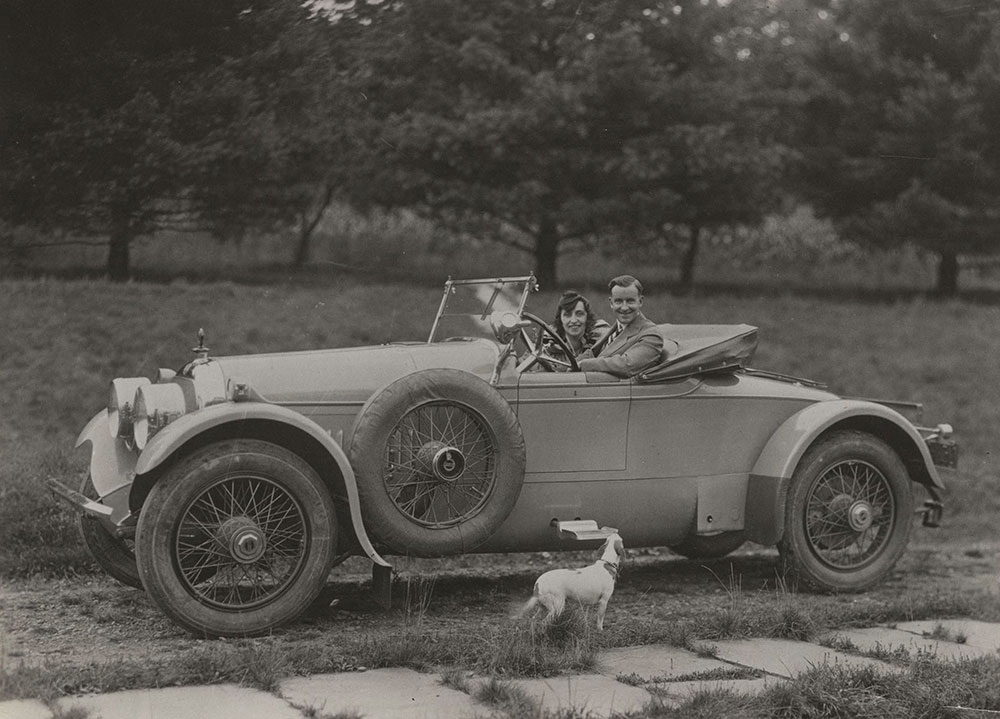
The Cunningham Car, Style 94A, Model V-4, 1920. Photo cred: Freelibrary.org. https://ow.ly/LCCB30j51fk
Cunningham Automobile Company – 1920 Cunningham V-Series
This car has a long history that dates back to some of the earliest horse-drawn carriages available. This, too, was a high-end brand like Pierce-Arrow. Cunningham had its hand in many pots, including buggies, limousines, planes and even hearses. Not to mention, they were also part of premier racing circuits.
Founder: Joseph Cunningham
Lifespan: 1896 – 1936
Headquarters: Syracuse, New York, United States
Fun Fact/s: Curious about this V-Series? Just look to Jay Leno who shows off his personal 1920 Cunningham on Jay Leno’s Garage (Video).
History:
The Cunningham Automobile Company has a rich history in transportation that dates back to the patriarch’s company, James Cunningham, son and Company, a company that flourished in the production of sleighs, buggies, horse-drawn coaches and carriages as early as the 1830s. Although it created its first electric-powered buggy by 1896, it was unlike the other two producers in the way that their first automobile did not go to market until 1908.
When they did start production, it was more on a private production basis to current customers. Even at that rate, it did not produce the whole car but rather created the body and sourced the parts. It wasn’t long before they were producing a V8 engine (1916) and airplanes (1920s). It was the first car to use steps of brass-framed aluminum instead of running-boards.
At the time of their first car production, they were big on luxury, elegance and being different. The first model could be seen at a price as high as $3,500, which was a pretty penny back then. They were very driven by being better than European styles, both in performance and appearance. Even more impressive was that they had up to 12 body styles in their first year. To see more notable firsts and advancements Cunningham had in the automotive industry, take a look at their timeline.
These vehicles are all included in the Reed Electrical Manual. It’s pretty cool to think about mechanics of those days referring to these pages to repair them. Imagine what they would think about today’s vehicles, or using ProDemand on the Internet as their source for repair information.
-
Franklin Model 9B Touring Starting, Lighting and Ignition Diagrams and Specifications
-
Franklin Model 9B Touring Starting, Lighting and Ignition Diagrams and Specifications
-
Franklin Model 9B Touring Starting, Lighting and Ignition Diagrams and Specifications
-
1916 Pierce-Arrow Model38 Starting, Lighting and Ignition Information
-
1916 Pierce-Arrow Model38 Starting, Lighting and Ignition Information
-
1920 Cunningham V-Series Starting, Lighting and Ignition Information and specifications
For more information on these vehicles
Cunningham
Cunningham Family Origin: https://www.coachbuilt.com/bui/c/cunningham/cunningham.htm
Sales Book Resource: https://mcnygenealogy.com/book/cunningham.pdf
Franklin
Franklin Club: Car Specs: https://www.franklincar.org/tech/franklin-details.html
Pierce-Arrow
Pierce Arrow Museum: https://www.pierce-arrow.com/history
Jay Leno Images & Article: https://autoweek.com/article/car-life/jay-leno-my-pierce-arrow


